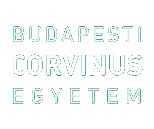Nguyen Trinh, Thanh Nguyen (2022) The Impact of EU Aid on the Trade Performance between the EU and Vietnam. Doktori (PhD) értekezés, Budapesti Corvinus Egyetem, Nemzetközi Kapcsolatok és Politikatudományi Doktori Iskola. DOI https://doi.org/10.14267/phd.2022030
Teljes szöveg
|
PDF : (dissertation)
1MB | |
|
PDF : (draft in English)
1MB |
Hivatalos URL: https://doi.org/10.14267/phd.2022030
Kivonat, rövid leírás
Based on a quantitative method, the finding of this study is consistent with other empirical work in explaining bilateral trade variation using gravity model. - Economic size has strong influence on trade as high economic growth together with high income will increase the demand for importing goods. - However, it is interesting to note that the negative coefficient of market size is more or less different trend with other papers. - The distance variable turns out with unexpected sign and insignificant, it may be because there are still other unexplained variables beside the distance such as specific trade agreements, trade barriers, tariff duties, and exchange rates. - The regression results support that EU aid has been an insignificant determinant of trade performance between the EU and Vietnam. - Similarly, there were insignificant result of Pearson correlation coefficient between EU ODA disbursement and Vietnam’s GDP growth and between EU ODA disbursement and total trade of the EU and Vietnam. Thus, there is not enough evidence to support the relationship between EU aid and the trade outcomes between the EU and Vietnam. Based on a qualitative method, the present research found that - EU ODA and EU AfT practices in Vietnam have not been linked directly to contemporary Vietnamese economic development and trade outcomes. Most their aid is allocated to social sectors and focuses on sustainable development but Vietnam requires capital accumulation in order to take-off or industrialize. - The EU aid failed to serve its unconcealed purpose of being a big push for Vietnam’s economy. As the EU aid disbursement to Vietnam was a low amount compared with other external capital and this aid was diversely allocated. A large part of EU aid was not directly to the productive sectors and covered the saving investment gap in Vietnam. - It is partly proven by the contribution of the EU-MUTRAP for the results of EFVTA negotiation and implementation. During the EVFTA negotiation process, EU-MUTRAP supported many related activities to inform EVFTA discussions, promote EVFTA rounds and to reach conclusions. Obviously, these activities exerted influence on the achievements of the EVFTA process. Nevertheless, enhancing Vietnam trade capacity can be seen as an indirect method of influencing EVFTA by the EU-MUTRAP. The EU-MUTRAP implemented the effective methods of decentralized aid project management and coordination mechanisms, making use of local experts, cost cutting, evaluation reports, and research and publications that can attract diverse actors from both sides. - Combining with EVFTA, the EU-MUTRAP provides a foundation for the imminent EVFTA. The effective method of delivering EU aid in the EU-MUTRAP project is enhancing human resources in Vietnam, especially those involved in the realm of trade and trade policy. However, weaknesses in the links between EU-MUTRAP and the EVFTA process include the lack of funding and supervision for sub-projects, and weak exchanges of information between stakeholders. Both sides may focus on tightening criteria for the selection of project beneficiaries, strengthening activities in the business community and improving the diversification of implementation methods. - The project could include the more directed substance of EVFTA in its activities, while supporting the business sector in preparing for the impact of the FTA between Vietnam and the EU. Furthermore, the selected case illustrated that the EU donors involved largely in aid management process from the design stage to evaluate and control stage of their projects in Vietnam. Based on their own benefits and priorities, the EU donors interfered to allocate aid to various sectors in Vietnam. - The EU AfT was given to Vietnam with conditions on policy. Therefore, the EU aid could not target capital accumulation in investment and the manufacturing industry in Vietnam. EU aid allocated to trade growth in Vietnam that do not directly simulate Vietnamese economic growth.
| Tétel típusa: | Disszertáció (Doktori (PhD) értekezés) |
|---|---|
| Témavezető: | Szent-Iványi Balázs |
| Tárgy: | Nemzetközi kapcsolatok |
| Azonosító kód: | 1222 |
| Védés dátuma: | 16 május 2022 |
| DOI: | https://doi.org/10.14267/phd.2022030 |
| Elhelyezés dátuma: | 04 May 2022 09:08 |
| Last Modified: | 11 Jan 2023 10:37 |
Csak a repozitórium munkatársainak: tétel módosító lap

 Letöltési statisztika
Letöltési statisztika Letöltési statisztika
Letöltési statisztika